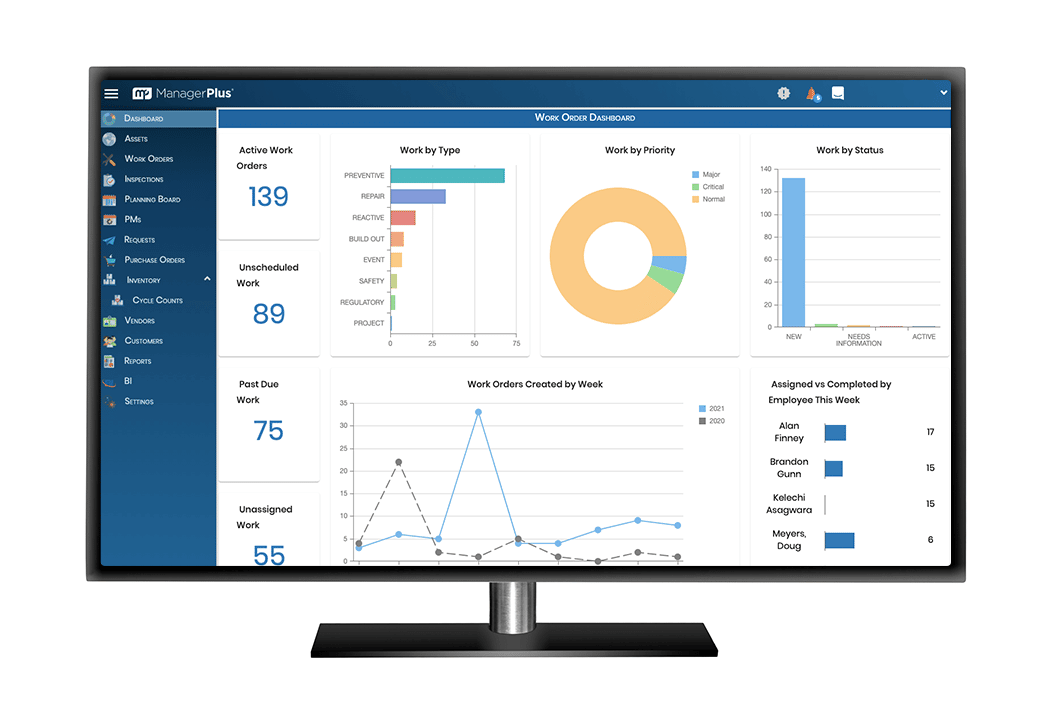Every business has assets that it relies on to perform its day-to-day activities, generate revenue, and drive growth. Those assets can range from the tangible to the intangible, the current to the fixed, and the operating to the non-operating. But whatever form they take, every asset that a business owns, creates, or benefits from requires careful management to maximize its potential.
So what are the different types of assets you can manage? This quick guide covers some of the basics and explains why you should make managing your assets a priority.
What are the properties of an asset?
An asset is anything of value that a business owns and that can be converted into cash or a cash equivalent. The asset can help the business to generate revenue or you can exchange it for some other form of benefit. When defining a business asset, there are three key properties to look for:
Ownership
An asset is an item or resource that you own that can be turned into cash or a cash equivalent at some time in the future.
Economic value
Assets must have an economic value and can either be sold or exchanged.
Resource
Assets do not have to exist physically. They can also be intangible resources that help the business to generate future economic benefits.
Every business asset is listed on a company’s balance sheet. It shows how you finance those assets and provides a snapshot of how well they are being used by the business.
What are the different types of assets?
In business terms, an asset is any item or resource of value that you own or lease and that helps you to run your business. This can include anything from machinery and vehicles to computer equipment and inventory. It can also include non-physical items such as trademarks, goodwill, and brand reputation.
Generally speaking, all of these assets fall into six classifications, including:
- Current
- Non-current (fixed)
- Tangible
- Intangible
- Operating
- Non-operating
It’s important to note that these classifications are not mutually exclusive. Every asset can be current or non-current, tangible or intangible, and operating or non-operating. For example, a piece of heavy machinery used in the production process is a non-current, tangible, operating asset.
How do companies classify assets?
Business assets can be classified based on the following criteria:
Convertibility
How easy is it to turn that asset into cash? That determines whether it’s a current or non-current asset.
Physical existence
Is the asset one that you can physically touch, feel, and see? That determines whether it’s a tangible or intangible asset.
Usage
Is the asset used in the daily operation of the business? That determines whether it’s an operating or non-operating asset.
Identifying which types of assets you own can help you better understand the liquidity of your business and assess the level of risk you face. It can give you a clearer picture of the contribution that each of your assets makes to your revenue and the proportion of company revenue that come from your business’s core activities. It’s also the first step in putting an appropriate asset management program in place.
Let’s take a look at how this asset classification works in practice.
Examples of convertibility
Current assets are all the assets that are expected to be used up in standard business operations or sold and converted into cash within 12 months. Examples include:
- Cash
- Bank deposits
- Accounts receivable
- Inventory
- Short-term deposits
- Prepaid expenses
- Bank drafts
Non-current or fixed assets are assets that cannot quickly or easily be turned into cash and are intended for long-term use (more than 12 months), such as:
- Property
- Machinery
- Equipment
- Tools
- Furniture
- Computer equipment
- Patents
- Trademarks
Examples of physical existence
Tangible assets are those that exist physically. This type of asset usually has a finite monetary value that’s equal to its purchase price minus depreciation.

Tangible assets include:
- Buildings
- Land
- Machinery
- Equipment
- Vehicles
- Inventory
- Cash
- Office supplies
Intangible assets are items and resources that do not exist physically but have a clear business value which tends to fluctuate in line with business performance and other factors. Examples are:
- Intellectual property
- Copyrights
- Trademarks
- Licenses
- Goodwill
- Franchises
- Reputation
- Brand
Examples of usage
Operating assets are essential to the day-to-day operations of the business and are used to generate revenue. They are typically held for the longer term and boost the business’s ability to provide goods and services. Examples include:
- Building
- Machinery
- Equipment
- Patents
- Inventory
- Copyrights
- Goodwill
Non-operating assets are not used in the day-to-day running of the business but can still generate revenue that contributes to the non-operating income. They include:
- Unused land
- Spare equipment
- Loans receivable
- Unallocated cash
- Market securities
- Royalties
A successful business will usually own a combination of current, non-current, tangible, non-tangible, operating, and non-operating assets. A well-balanced asset portfolio can help to create a healthy flow of cash into the business and generate long-term value, but only if you manage them correctly.
Why is asset management important?
Very simply, asset management is the process of controlling every aspect of the assets that your business owns. Putting an effective asset management process in place enables you to monitor, manage, and maintain your assets in a systemized way. That can lead to improvements in the efficiency and productivity of your assets and enhance your return on investment.

Taking a systematic approach to managing your assets enables you to:
Track the performance of assets
Putting an asset management process in place lets you track the location of your assets, how they’re used, when changes are made, and how they’re performing. That provides a regular flow of data that enables you to review their performance and identify any unnecessary costs.
Reduce maintenance costs
Businesses face multiple repair and maintenance issues during an asset’s lifecycle and those costs can put a significant dent in company profits. Managing your maintenance strategy more efficiently and emphasizing preventive maintenance as part of your asset management process can help to reduce those costs.
Mitigate risks
Managing risk is one of the most difficult things for asset-intensive businesses to do, simply because that risk can come in so many forms. You should consider all of the possible risks and emergencies that your business could face as part of your asset management process. You can then develop plans to overcome those risks quickly and effectively.
Measure and monitor life cycle costs
Measuring and monitoring the costs of assets across their life cycle is an important part of any asset management program. It enables you to analyze where an asset is in its life cycle so you can replace business assets at the optimum time to manage your costs and reduce risks.
What are the benefits of asset management software?
Although a manual approach to asset management is possible, most businesses, particularly growing or established ones, significantly benefit from the use of asset management software.  Enterprise asset management solutions like ManagerPlus® help businesses automate many of the tedious and repetitive tasks that are involved in the asset management process, allowing you to focus on activities that are critical to sustained performance.
Enterprise asset management solutions like ManagerPlus® help businesses automate many of the tedious and repetitive tasks that are involved in the asset management process, allowing you to focus on activities that are critical to sustained performance.
ManagerPlus enables you to optimize your asset operations, increase uptime, and extend the life of your equipment, all while reducing your costs. It also allows you to gather and track valuable data on your assets to improve your maintenance strategies and deliver intelligent reports of their performance, which helps you to keep your critical assets running better, for longer.
Next steps
Sign up for a free demo today to see how ManagerPlus can help you reduce your costs and manage your business’s assets more smoothly.
Executive summary
Every business has assets that it relies on to perform its day-to-day activities and drive business growth. They can range from the tangible to the intangible, the current to the fixed, and the operating to the non-operating. Business assets can be classified based on three criteria. That determines what type of asset you are dealing with and the role it plays in the business. And whatever the classification of the asset, they all need to be managed.
Asset management is the process of monitoring, managing, and maintaining your assets in a systemized way. That can bring about improvements in the efficiency and the productivity of your assets and enhance your return on investment. Rather than managing this process manually, smart businesses are increasingly turning to enterprise management software like ManagerPlus to help them get more from their assets.
